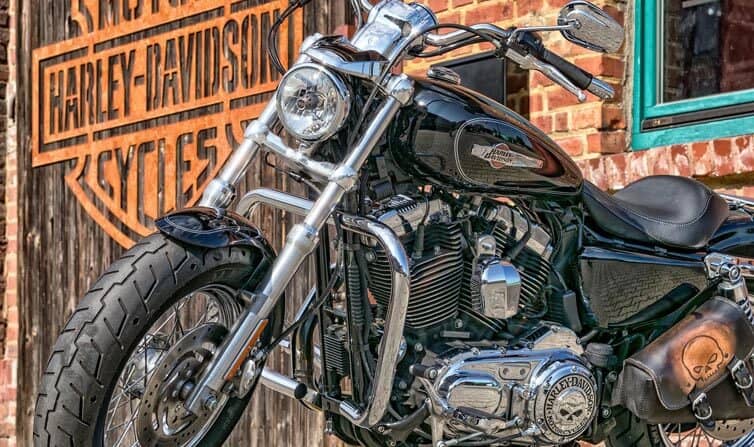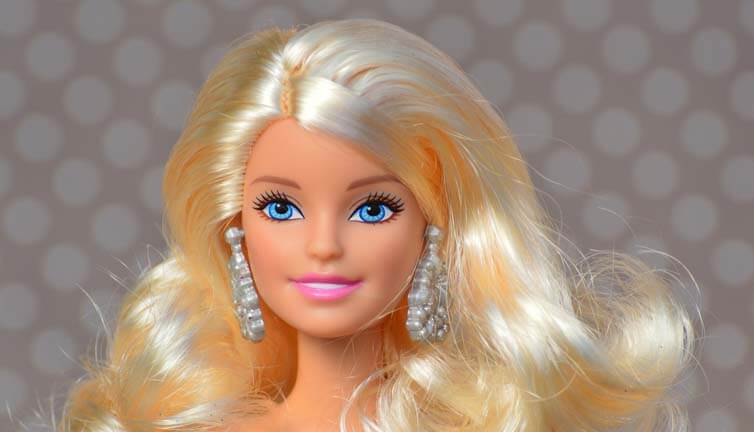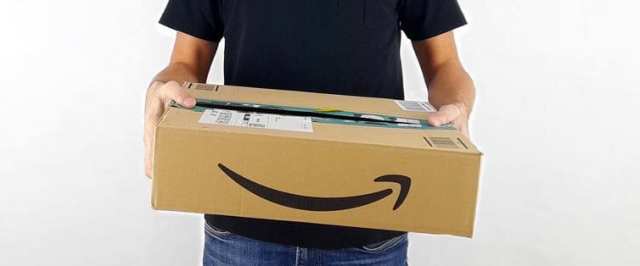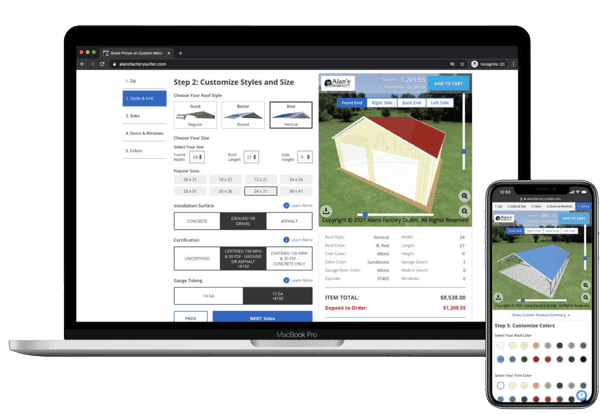Did you know that Amazon, Apple, Dell, Disney, Google, Harley Davidson, HP, Mattel, Microsoft, and Yankee Candle are all businesses that started in a garage? Discover their amazing stories for inspiration on how to start your own business on a shoestring.
#1 – Amazon
Did you know that Jeff Bezos started his company in a garage? You’ve surely heard of a little company called Amazon that sells everything from clothing to kitchen appliances to lava lamps. Oh, and you can buy books there, too. Amazon is just one of the many companies that got its start in a garage.
Amazon: The Beginning
With money from his parents, Jeff Bezos and his wife, MacKenzie, started Amazon in the garage of their rented home in Bellevue, Washington, in the mid-1990s. He had an ambitious plan to create an online bookstore and expand from there to sell everything. He set up desks made of old wooden doors and started working on software that would one day make him the richest man in the world.
Success Delivered Quickly
Within its first month, Amazon sold books to people in each of the 50 states as well as in 45 countries. In a matter of two months, sales at Amazon zoomed to $20,000 a week. There was a bell in the first office of Amazon that rang each time a book was sold. Soon, the bell was ringing so often that they had to take it down to remove the distraction.
Today’s Amazon
Amazon’s success eventually took it from Bezos’s garage to a headquarters in Seattle, Washington. The Seattle campus has 40,000-plus employees who work in a collection of energy-efficient buildings in the city.
Fun Facts About Amazon
- Bezos’s original name for his company was Cadabra, but he was persuaded that it sounded too much like the word “cadaver.”
- The servers Bezos used to operate Amazon out of his garage required a lot of power. If a vacuum or hair dryer was turned on in the house, it would blow a fuse!
- The first book sold on Amazon, back in April of 1995, was Fluid Concepts and Creative Analogies: Computer Models of the Fundamental Mechanisms of Thought by Douglas Hofstadter.
- Amazon’s logo has an arrow pointing from the letter A to the letter Z. This indicates that Amazon sells a wide range of products, everything from A to Z.
- In the company’s early days, Bezos put orders together for customers himself and drove boxes to the post office to mail them.
What Makes a Garage an Excellent Place to Start a Business?
Chances are good that Bezos appreciated the secure shelter his garage provided for the costly electronic equipment he used in his daily work. If you’re thinking about starting a business in your garage, security is just one of the benefits of making your garage the headquarters of your new business.
Whether you’re drawing up plans for an online business, working on a great new invention, or writing a book, a metal garage gives you the quiet and privacy you need to focus on the work at hand. I like the idea of closing the door of the garage for the day and returning to your house until you feel inspired once again.
If you set up your business in your garage and you also can enjoy soft breezes while you type, write, make designs, or tinker with a new invention. Just open the main garage door, the side door, or even the window. You’re sure to be more creative in a comfortable environment.
#2 – Apple

Here is the story of how Apple got its start within the walls of a simple garage.
The Beginnings of Apple
Apple was founded by Steve Jobs and Steve Wozniak. The two met while Jobs was doing an internship at Hewlett-Packard; Wozniak worked as an engineer there. Their friendship was based on an avid interest in electronics and computer design. In 1975, the two friends decided to see if they could create their own computer. Their first office was the garage belonging to Jobs’s parents. That’s where the prototype for the Apple I was born. Not surprisingly, this garage is now a historic site.
The Apple I Gives Way to the Apple II
Jobs and Wozniak did sell many Apple I computers, even though the design didn’t have a keyboard or a monitor. Most of the people who bought the Apple I were individuals with a special and advanced interest in electronics and computers; in other words, the people who purchased the Apple I were a lot like the two people who designed it. Like all ambitious entrepreneurs, Jobs and Wozniak had ideas to improve on the design of their first Apple computer. They wanted to make a user-friendly computer that would appeal to the general public as opposed to just computer enthusiasts, and this thinking led to the development of the Apple II computer, released in 1977. It had a keyboard and was compatible with a monitor. Furthermore, this computer could display color graphics; the Apple logo was designed to reflect this appealing feature. The first year it was available, the Apple II recorded $3 million in sales. By 1980, this computer took off, with sales reaching $200 million. Hey, not bad for a 5-year-old company, right?
The Impact of Apple Computers
Apple was the first company to introduce the computer as a device anyone could have access to and find useful. Though some of the Apple computers developed in the 1980s were not as popular with the public for various reasons, there’s no doubt that Jobs and Wozniak took the first steps in developing the personal computers we use today.
The Garage as the Perfect Birthplace of Apple
I’ve been thinking about why Jobs and Wozniak chose to start their computer company in a garage. Of course, the first reason that comes to mind is that it was rent-free! After all, it did belong to Jobs’s parents. Maybe they believed in their son’s dreams just as much as he did. Also, designing a computer involves putting large and small components together, creating diagrams, and making notes, so these inventive men needed plenty of space to spread out, and a garage definitely provides that. Plus, if you’re inventing what you think is the next big thing, wouldn’t you want to keep your business operations private? A garage provided them with privacy as well as security for their invention. As you can see, a garage can be the perfect place for individuals inspired to bring their ideas and visions to life!
#3 – Hewlett-Packard

Now let’s look at the two entrepreneurs who came together to make the Hewlett-Packard company.
The Beginning of the Hewlett-Packard Story
William Hewlett and David Packard met while going to school at Stanford. They shared a curiosity about electronics and a desire to carve out their own livelihood by starting a business. Hewlett wanted to name their business HP, while Packard wanted to name it PH. With the toss of a coin, HP was born.
The Birthplace of Silicon Valley
In 1938, Packard and his wife rented a home in Palo Alto partly because it had a one-car garage. This garage became the first workshop of the HP company in 1939. Hewlett moved into a shed in the back of the Packard house so work could take place at all hours. The garage had adequate space for Hewlett and Packard to work on projects, including experiments with electrical currents. Plus, the garage had tables and shelves for their tools and pieces of equipment, including a drill press. This is where the pair came up with their audio oscillator.
The audio oscillator was their ticket to success as a company. The one-car garage in Palo Alto is a historical landmark in California and is now known as the birthplace of Silicon Valley. In 2000, HP purchased this home and took on the work of restoring it to its original condition.
Walt Disney Enters the Picture
Remember the Disney movie Fantasia? In 1940, another entrepreneur, Walt Disney, was looking for a way to make the most of the sound in this incredible movie. He’d heard of HP’s audio oscillator and decided to purchase one for each of the handful of theaters presenting Fantasia . The wonderful symphonic sound that came out of the audio oscillators made this HP product a hit! They had Walt Disney singing the praises of their invention.
The Growth of HP
After a little more than a year in business, Hewlett and Packard started to outgrow their garage workshop. In 1940, they moved to another space and continued to work on new products. The company incorporated in 1947 and went public ten years later, providing each of its employees with a share in the company.
Getting Into the Computer World
In the late 1960s, HP came up with products including a time-sharing computer and handheld calculator. Moving into the 1970s, HP ramped up its production of computers. In the 1980s, HP offered many types of computers, from large models used by big companies to smaller personal computers for individuals. Compaq became a part of HP in 2002.
Whether it’s a laptop, printer, calculator, copy paper, or one of dozens of other products, there’s an excellent chance you’ve held an HP product in your hands at one time or another. The company Hewlett and Packard started in that one car garage in Palo Alto back in 1939 is still flourishing today. How inspiring!
#4 – Google

If you ever thought that starting a business in your garage is small potatoes, the story of Google will certainly change your mind.
The Story Begins
The year: 1995. The place: Stanford University. The future founders of Google, Larry Page and Sergey Brin, met at the university by chance. Page was a visitor touring the university as a potential graduate student, and Brin was the student designated to give him the tour. The story goes that when these two men met, they had a lot of disagreements and maybe even some ruffled feathers. But by the next year, they’d formed a partnership with the goal of creating a tool that organized and ranked Web pages. Page and Brin started their work in their dorm rooms but quickly found they needed another type of space for their venture.
Google’s Garage
When you’re creating a search engine that organizes information from all over the world and makes it accessible to the average person, you need your own space. So in 1998, when Page and Brin got their initial investment of $100,000 from Sun Microsystems co-founder Andy Bechtolsheim, a Stanford alumni, they moved their venture to the suburban garage of a home in Menlo Park, California. The owner of the garage and their new landlord was a woman named Susan Wojcicki. Page and Brin hauled desktop computers and a ping-pong table into the garage, and Wojcicki put a blue rug down on the garage floor to make the space more inviting. The garage afforded Page and Brin the space, privacy, and thinking room they needed to continue to build their search engine.
Google Grows
Page and Brin’s company gained a lot of attention from investors in a short amount of time. Google was incorporated in the autumn of 1998. From there, Google received $25 million in venture capital. This prompted Page and Brin to pack up their work and move their headquarters to an office in Palo Alto, alongside eight employees and an office dog, Yoshka. But within a year, the growing company needed even more space, so they moved to Mountain View, where Google is still headquartered today.
Fun Facts
- The first name of the company was Backrub. It was soon changed to Google, a play on the math term googol.
- Wojcicki became the 16th employee of Google, and she now serves as the CEO of YouTube.
- Google celebrates its birthday on Sept. 27 every year, but nobody knows why, not even Brin and Page: The company was incorporated on Sept. 4, 1998.
- Google hosted its 15th birthday celebration in the garage where it all started.
Today, billions of people use Google products, and their search engine is the most popular in the world by far. See? A garage can be an ideal place to bring an ambitious idea or plan to life. Just ask Larry Page and Sergey Brin!
#5 – Disney

Walt Disney’s Early Years
From an early age, Walt Disney loved to draw and create interesting characters. His dream was to become a cartoonist for a newspaper. As a teenager, he contributed drawings to the McKinley High School newspaper in Chicago. In 1919, after serving in France with the Red Cross Ambulance Corps, he took a job as an advertising cartoonist in Kansas City, Missouri. A few years later, Disney made the decision to move to California and start his own studio with the help of his brother Roy.
The Disney Brothers
In 1923, Walt Disney and his brother set up shop in their uncle Robert’s garage in California. The garage offered enough space for Walt’s drawing materials, a makeshift animation table, and an animation camera. Walt’s uncle charged them a few dollars a week in rent, and they worked there for a couple of months before moving into their own office space. The following year, friend and fellow animator Ub Iwerks joined the team, and in 1927, Iwerks and Walt Disney created a character named Oswald the Lucky Rabbit, their first breakout success. Universal Studios made several black-and-white cartoons featuring the character. But after a contract dispute, Walt Disney left Universal, which kept the rights to Oswald. This prompted Disney and Iwerks to create another unique character.
Introducing Mickey Mouse
Disney started working on a cartoon called Plane Crazy featuring a character named Mickey Mouse. The 1928 work was a silent, black-and-white cartoon. However, while making Plane Crazy, Walt and Roy took note of the growing popularity of movies with sound, also known as talkies. That year, they would release two more Mickey shorts, the second of which was Steamboat Willie. Steamboat Willie stars Mickey Mouse and is known as the first animated movie with synchronized sound. The character of Mickey Mouse was a big hit with the public. Walt and Roy licensed Mickey’s image, and it was placed on a tablet of notebook paper for kids, which was soon followed by many other products. Soon, Mickey’s image would be recognized throughout the world.
Exploring the Latest Technology
Walt Disney continued experimenting with new technology in his work. For example, he used Technicolor in his films and even won an Academy Award in 1932 for a short animated film called Flowers and Trees. This was his first film in full three-strip Technicolor. Walt Disney was then inspired to move into creating full-length, color films, the first one being Snow White and the Seven Dwarfs in December of 1937. Other favorites quickly followed, including Pinocchio, Dumbo, and Bambi. The list of beloved films created by Walt Disney grew over the next three decades, until his death in 1966.
Disney Studios Today
Today, the flourishing Walt Disney Studios is located on 50 acres of land in Burbank, California. That seems an awfully long way from the company’s start in Uncle Robert’s garage, doesn’t it? But that garage was a necessary step on the path to the company’s success.
Walt Disney once said, “All our dreams can come true if we have the courage to pursue them.” He was certainly living proof of that.
#6 – Yankee Candle

Yankee Candle makes fragrant, colorful products that can soothe your nerves, bring back childhood memories, or even make you hungry. There’s an excellent chance you have at least one of their products in your home.
Beginning the Business
The story of Yankee Candle started in 1969 with a 16-year-old boy’s desire to give his mother a beautiful Christmas gift. The founder of Yankee Candle, Michael Kittredge II, didn’t have money to purchase a gift for his mom, so he put his mind to work and made a candle in his garage. He used melted crayons and a milk carton. Though he didn’t know it, he’d just made the prototype for his future business. As a twist in the story, Kittredge didn’t give the candle to his mother: A neighbor saw it, loved it, and convinced him to sell it to her. The young entrepreneur used the money to buy supplies to make two more candles. And yes, he gave one of those to his mother! He sold the other one and purchased more candle-making supplies with the proceeds. For the next four years, Kittredge grew his candle-making business in his parents’ garage.
Taking the Business to a New Level
Yankee Candle continued to flourish as Kittredge sold a growing number of candles. He hired a staff to help him make the candles and soon had a team of 12 employees. It was time to move operations to a larger space. Kittredge rented an old paper mill for $80 a month. Though the building was 200 years old with no heat or electricity, Kittredge and his staff persisted in their goal of making fragrant, colorful candles. Kittredge used the upper floors of the paper mill for candle-making and the first floor as an outlet store.
The Sweet Smell of Success
In 1974, Kittredge’s unique candles got a lot of attention at the Boston Gift Show. This recognition led to the opportunity to sell his candles through national retailers. By 1983, Yankee Candle was making $1 million in sales per year. In time, more than 500 Yankee Candle stores would open up in shopping areas and malls. As an interesting note, in 1986, Yankee Candle began putting full-color labels on their candles: Before that, the illustrations on the candle labels were colored in by hand with colored pencils.
Enduring Success
Today, Yankee candles are still available in stores, but many are purchased from mail-order catalogs and online. In 1996, the Yankee Candle website launched, sending the company’s sales to more than $100 million per year. In 1998, Michael Kittredge II sold the company and retired. However, the candle business called him back in 2009, when he helped his son to start Kringle Candle.
It’s hard to believe that such a huge business as Yankee Candle began with an idea for a Christmas gift for Mom. But that’s the story behind Michael Kittredge and his popular candles.
#7 – Harley-Davidson

Now let’s roll on with the story behind the famous Harley-Davidson motorcycles, sometimes called hogs.
The Beginning
The story begins in 1901 with 20-year-old William Harley, who created a plan for a small engine designed to fit onto the frame of a bicycle. This engine added to the bike’s speed as the rider pedaled. In 1903, Harley joined forces with friend Arthur Davidson to take this idea to the next level. They set up shop in a 10-by-15-foot shed/garage and created the first version of the Harley-Davidson motorcycle. The garage had adequate shelf space for the parts, tools, and other materials necessary for their work. One of the first people to purchase their 1903 model was a school friend named Henry Meyer.
Growing the Business
Soon, this pair of ambitious inventors was joined by Arthur’s brother, Walter. The Harley-Davidson business continues to grow as the three men created five more models of the motorcycle they sold to their school friend. The first Harley-Davidson dealer was Carl H. Lang of Chicago, who sold one of the first three motorcycles the company made. As the business grew, the inventors went on to produce more motorcycles. In 1906, they made 50 motorcycles, prompting them to move their operations to a larger building on Chestnut Street in Milwaukee. The inventors hired six employees and even put out a motorcycle catalog.
Getting Recognition
In 1908, the Harley-Davidson motorcycle received even more attention when Walter Davidson achieved a perfect score in the seventh annual Federation of American Motorcyclists (FAM) contest measuring endurance and reliability. Davidson and his motorcycle also set a FAM economy record of 188.234 miles per gallon. People in the world of motorcycles were hearing good things about Harley-Davidson.
Creating Momentum
Harley-Davidson continued developing innovations, including improvements on the design of the V-twin engine and a patent for the Ful-Floteing seat, which was more comfortable for riders of differing sizes. In 1917, after the start of World War I, a third of the motorcycles made by Harley-Davidson were sold to the U.S. military for use in the war.
The Mid-20th Century and Beyond
Harley-Davidson celebrated its 50th anniversary in 1953. Its famous logo featuring the letter “V” for the V-twin engine and the words “American Made” was put on a medallion placed on the front fender of all 1954 Harley-Davidsons. Another highlight of the decade saw singer Elvis Presley posing for a motorcycle enthusiast magazine on his 1956 Harley-Davidson motorcycle.
More Highlights in Harley-Davidson History
- 1960: Harley-Davidson makes the Topper scooter, the only scooter model the company ever made.
- 1968: Racer Cal Rayborn claims back-to-back wins on Harley-Davidson’s 750 KR at the Daytona 200
- 1986: The 1340cc V2 Evolution engine is put on the market after being in development for seven years.
- 1988: A traveling museum featuring classic Harley-Davidson models and memorabilia of the company’s history starts a tour around the country.
From its humble beginnings in a 10-by-15-foot garage, Harley-Davidson cruised to the top of its industry and continues to thrive. I hope this inspires you to consider making your garage into the birthplace of your new business!
#8 – Mattel

This is the story of how Mattel, maker of the Barbie doll, made its way from a garage to the big time!
The Founders of the Mattel Company
The Mattel company’s history starts with Elliot and Ruth Handler along with their friend Harold ‘Matt’ Matson. Before starting Mattel, Elliot Handler worked as a light fixture designer and artist. He also liked to make dollhouses. His wife, Ruth Handler, contributed her business acumen and creative ideas to develop their company. Harold ‘Matt’ Matson invested in the young company. In fact, it was Harold’s garage in southern California that served as Mattel’s first headquarters when the company was founded in 1945. The company’s name Mattel is a combination of Matson’s and Elliot’s names.
Setting Up Operations
The first items sold by the company included picture frames and furniture for dollhouses. A garage was the perfect setting for making these types of items. Elliot, Ruth, and Harold had space for their tools, materials, and other supplies. Plus, a garage gave them the privacy they needed to focus on their work. Soon, Mattel moved on from picture frames and dollhouse furniture to toys that appealed to the musical tastes of kids.
The Uke-A-Doodle Makes History
What was the first Mattel toy that was really popular with the kids? Answer: The Uke-A-Doodle! Introduced in 1947, the Uke-A-Doodle was a musical toy shaped just like a ukulele. A child simply cranked the handle on this colorful toy to make it play a familiar tune such as “London Bridge”, “Farmer in the Dell” and “Aloha” along with others. The Uke-A-Doodle was the first in a line of unique musical toys made by Mattel.
Moving Mattel Headquarters to Los Angeles
With the great success of the Uke-A-Doodle, Mattel was incorporated in 1948, moving its headquarters to Los Angeles. This move was the first step toward two decades of tremendous creativity and business success. In 1955, Mattel made a very big splash in the toy industry by placing ads on a popular television show called the Mickey Mouse Club.
Barbie Makes Her Debut
In 1959, Mattel introduced Barbie, a three-dimensional doll. It was Ruth Handler who came up with the idea. She even named the doll after her daughter, Barbara. The Barbie doll had fashionable outfits, beautiful hair, and big dreams for her life. So, it’ll come as no surprise that Barbie is the best-selling toy in the history of Mattel. Ken, Barbie’s love interest, was introduced in 1961 while Barbie’s younger sister, Skipper, came along in 1968.
Mattel’s Success in the Toy Industry Continues
Mattel created a lot of other well-known toys including:
- Hot Wheels in 1968
- Chatty Cathy in 1960
- See ‘N Say in 1965
- Masters of the Universe dolls in 1982
Though the company has changed over the years, it has continued to flourish in its different forms. And it all started with a unique vision, persistence, and a garage with plenty of space for creativity.
#9 – Microsoft

Here is how Microsoft grew from its humble beginnings in a garage to a monster in the computer software industry.
The Early Days of Microsoft
Bill Gates and Paul Allen had been friends since they were students at Lakeside School in Seattle. In the 1970s, while working as a programmer for a company called Honeywell, Paul Allen stumbled upon an article in Popular Electronics. It was all about a microcomputer called Altair, made by the Micro Instrumentation and Telemetry System Company, aka MITS. Paul traveled to Harvard where he excitedly shared the article with Bill. They were immediately inspired to come up with a software implementation for the microcomputer’s system. The implementation, called BASIC, was accepted and it was distributed as Altair BASIC. This led to the birth of Microsoft on April 4th, 1975. Allen left his job and Gates gave up college to setup headquarters in a small garage on California Street in Albuquerque, New Mexico. Microsoft was officially in the business of creating software.
Gates and Allen spent the next few years working on more software for the Altair 8800. By the end of 1978, sales numbers for Microsoft surpassed one million dollars. In 1979, the headquarters of Microsoft moved from Albuquerque, New Mexico to Bellevue, Washington.
A Growing Record of Success
In 1985, the first version of Microsoft’s Windows came into being. This software offered a variety of graphics and gave users the option of running different programs at the same time. In addition, the software allowed users to share data between programs. Microsoft’s Windows software helped to make personal computers a must-have purchase for the average household. Furthermore, the software was easy to use and helpful to people who weren’t necessarily computer experts.
Since 1985, Microsoft has created nine main versions of Windows. In 1987, Bill Gates, at 31-years old, became the world’s youngest billionaire. And he was just getting started!
Windows 95 Makes Its Debut
With the arrival of the late 1980s, Microsoft was the world’s largest company producing software for personal computers. In the mid ’90s, personal computers were a familiar sight in homes and offices throughout the country. When Windows 95 was introduced it was a big commercial success. As more people were discovering the Internet in the 1990s, Microsoft developed a web browser called Internet Explorer. I bet you’ve used it a time or two!
Microsoft Continues to Innovate
Today, Microsoft is a one trillion dollar company. The company has experienced consistent success throughout the years including the launch of the search engine BING in 2009 and the acquisition of Skype in 2011. In addition, Microsoft launched Xbox One in 2013 and purchased LinkedIn in 2016. This company definitely has a knack for seeing the future.
Fun Facts about Microsoft
- The original name of the company was Micro-Soft (a combination of the words microprocessor and software)
- Microsoft was founded in Albuquerque because that’s where MITS was located
- Microsoft has an underwater data center off the coast of Scotland
So, there you have it. If you’re thinking about starting a business, remember the garage where Microsoft came into existence and where it is today. Get inspired!
#10 – Dell

If you own a laptop or desktop computer, there’s an excellent chance it is a Dell, named after entrepreneur Michael Dell.
The Beginning of Dell
The history of Dell Computer Corporation began in a dormitory room at the University of Texas at Austin. In 1984, 19-year old college freshman Michael Dell had a strong interest in both math and technology. He enjoyed working with old computers, giving them an extra supply of memory and additional disk drives. In fact, he made some extra cash by selling these computers to fellow students. This sparked an idea.
He began to research the computer industry and saw the need for more efficiency in the process of making and selling computers. He decided that custom-building computers and selling them directly to the people who wanted them would streamline the process. And so, with a startup fund of $1,000, Dell decided to start his own computer business.
Dell Leaves College Behind
You know the old saying, “Do what you love, and the money will follow”? Well, that was certainly true for Dell. He began constructing and selling computers using stock parts from IBM. As his list of orders expanded, he realized that his business, known at that time as PC’s Limited, was getting too big for his dorm room. So he left his dormitory behind, along with his days as a college student. He moved his business operations to a garage. Setting up his business in a garage gave him the space he needed to perform his work with efficiency. Plus, he had storage space for parts as well as privacy and a quiet atmosphere.
Success Comes Quickly
In 1985, Dell designed and constructed his first computer, called the Turbo PC. The Turbo PC was a big hit with business owners. It was a fast, powerful computer perfect for use at businesses of all types. In its first year of operation, Dell’s company sold more than $1 million in products, providing the company’s young founder with a profit of $134,000.
Dell Continues to Grow and Flourish
In 1987, Dell changed the name of his company from PC’s Limited to Dell Computer Corporation. By 1988, the company was growing at a rate of 80 percent each year. In 1996, the company launched the website Dell.com, making $1 million worth of sales each day during its first six months.
Dell Goes International
In 2000, Dell Computer Corporation had more than 35,000 employees and offices in 34 different countries. Sales made on the Dell website topped out at $40 million per day. Michael Dell was officially a billionaire. In 2001, Dell earned recognition for being the number one provider of computer systems throughout the world. In 2015, the rate of customer satisfaction with Dell products reached its highest level to date.
Michael Dell’s Company Today
Today, the company, now known as Dell Inc., sells laptops, desktop computers, televisions, printers, scanners, and other technology through its website as well as in large stores such as Wal-Mart and Best Buy. This company is still well-known for its strong customer support. And Michael Dell is now a billionaire many times over.
Whether it’s making computers, building motorcycles, making candles, or creating cartoon characters, all of the entrepreneurs I’ve written about in this series possess an inexhaustible curiosity. They’re driven to push the boundaries in their industry and continually learn more. Does this sound like you? With a creative idea (and a spacious garage), who knows what business ventures are in your future?




